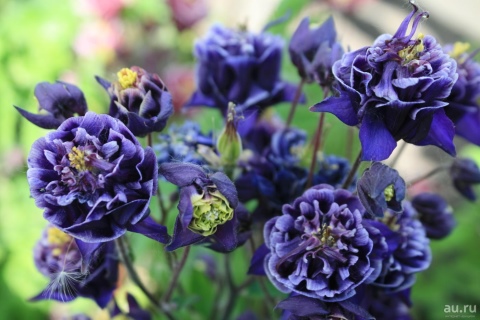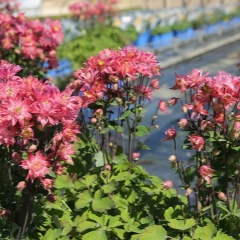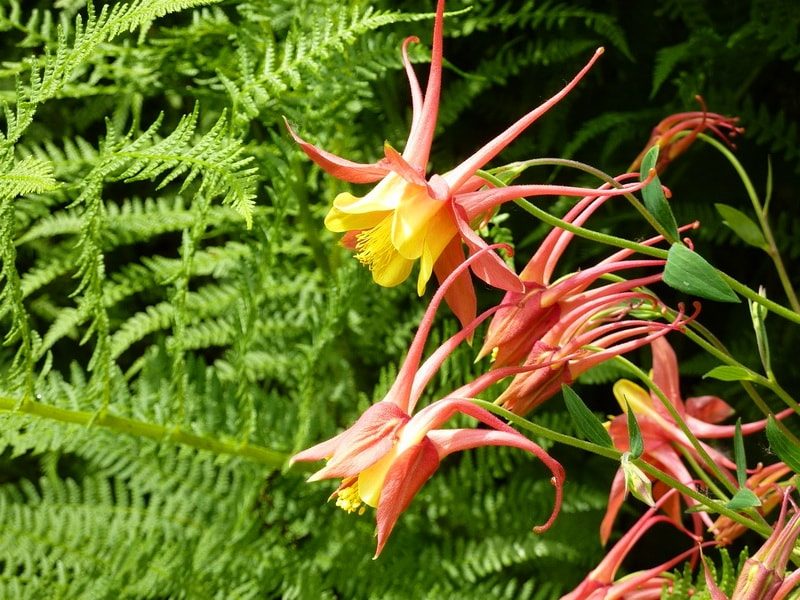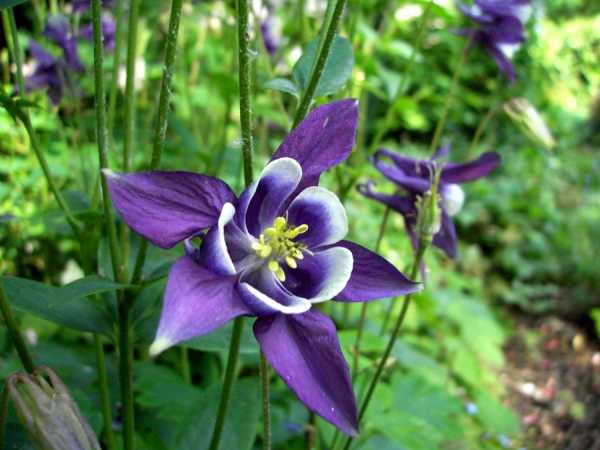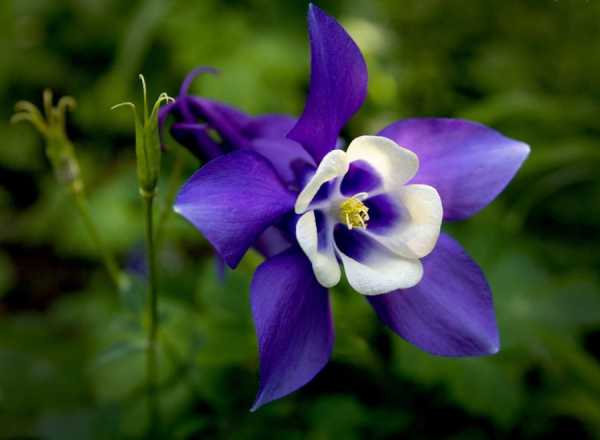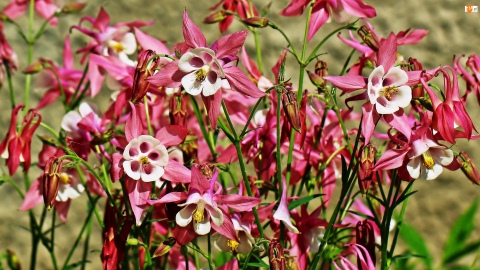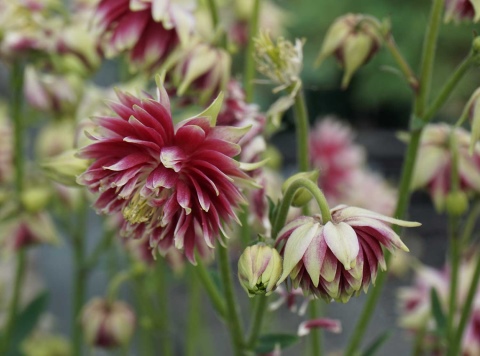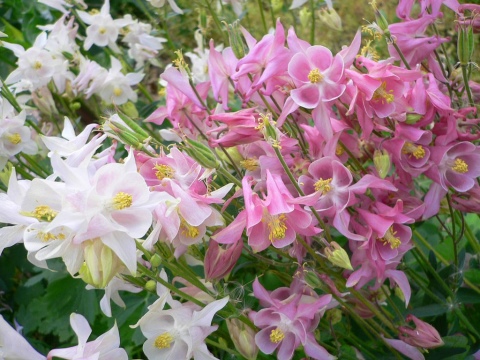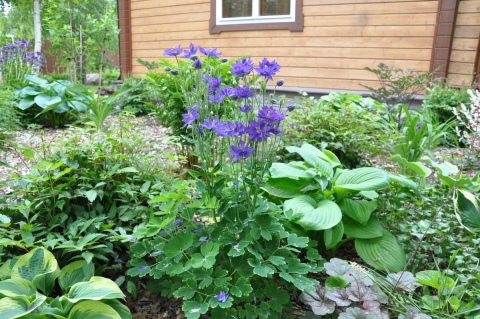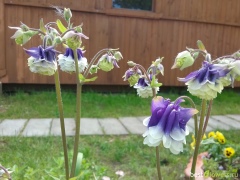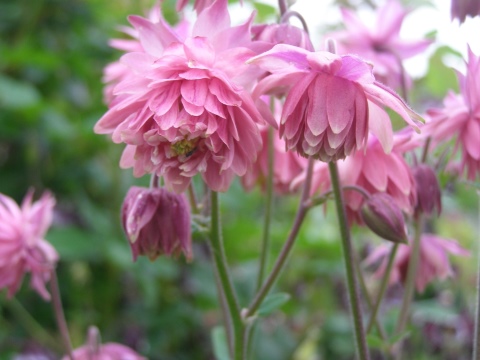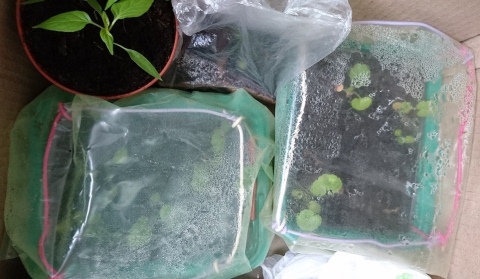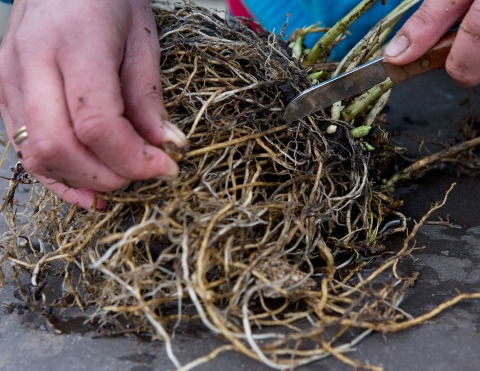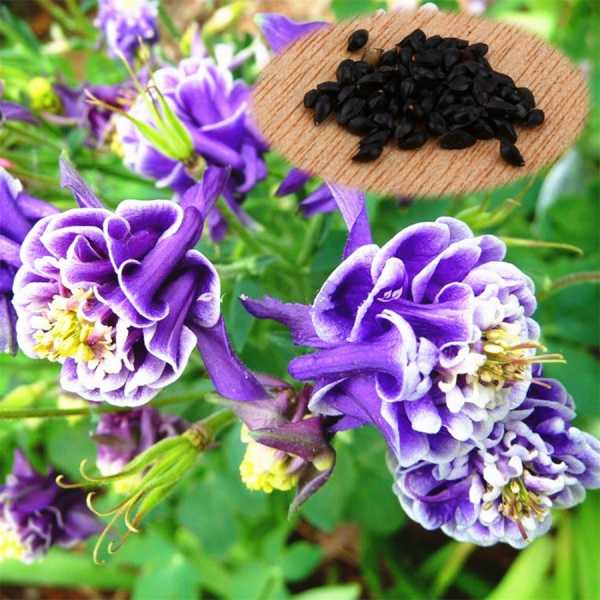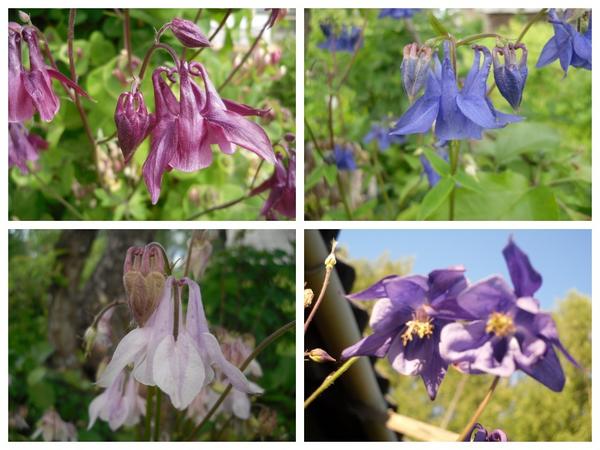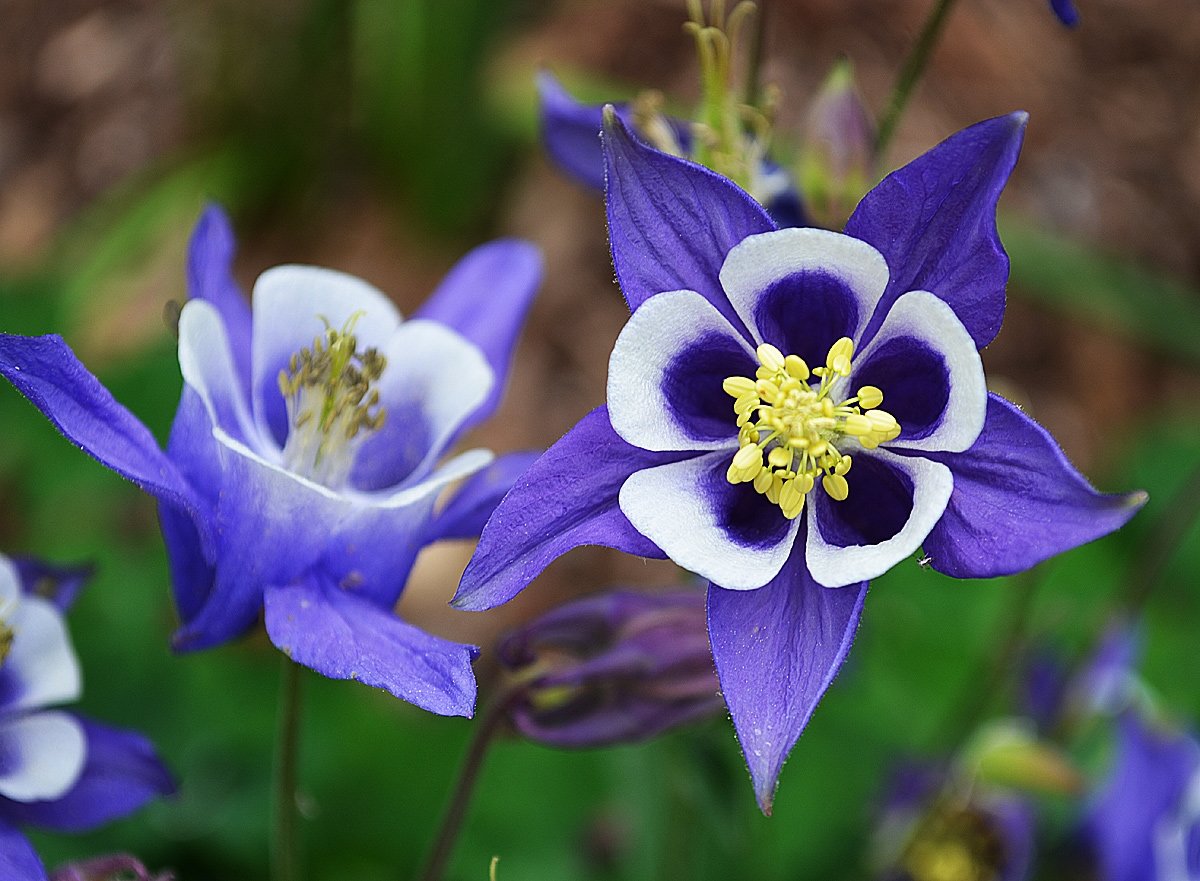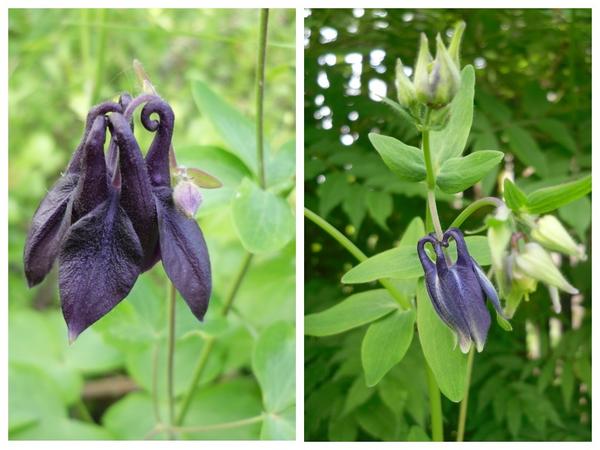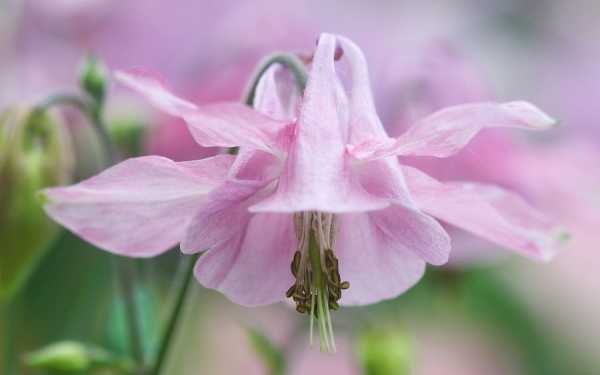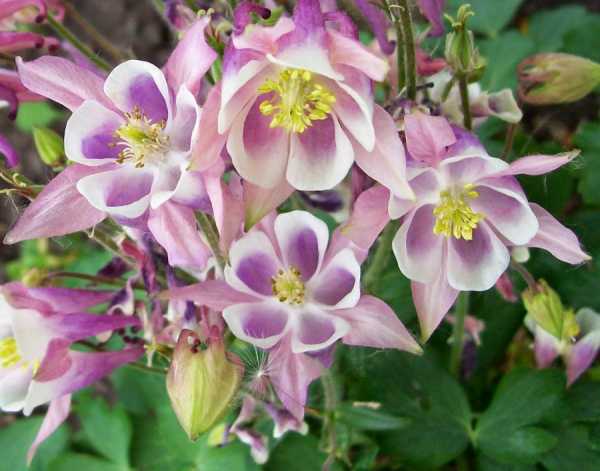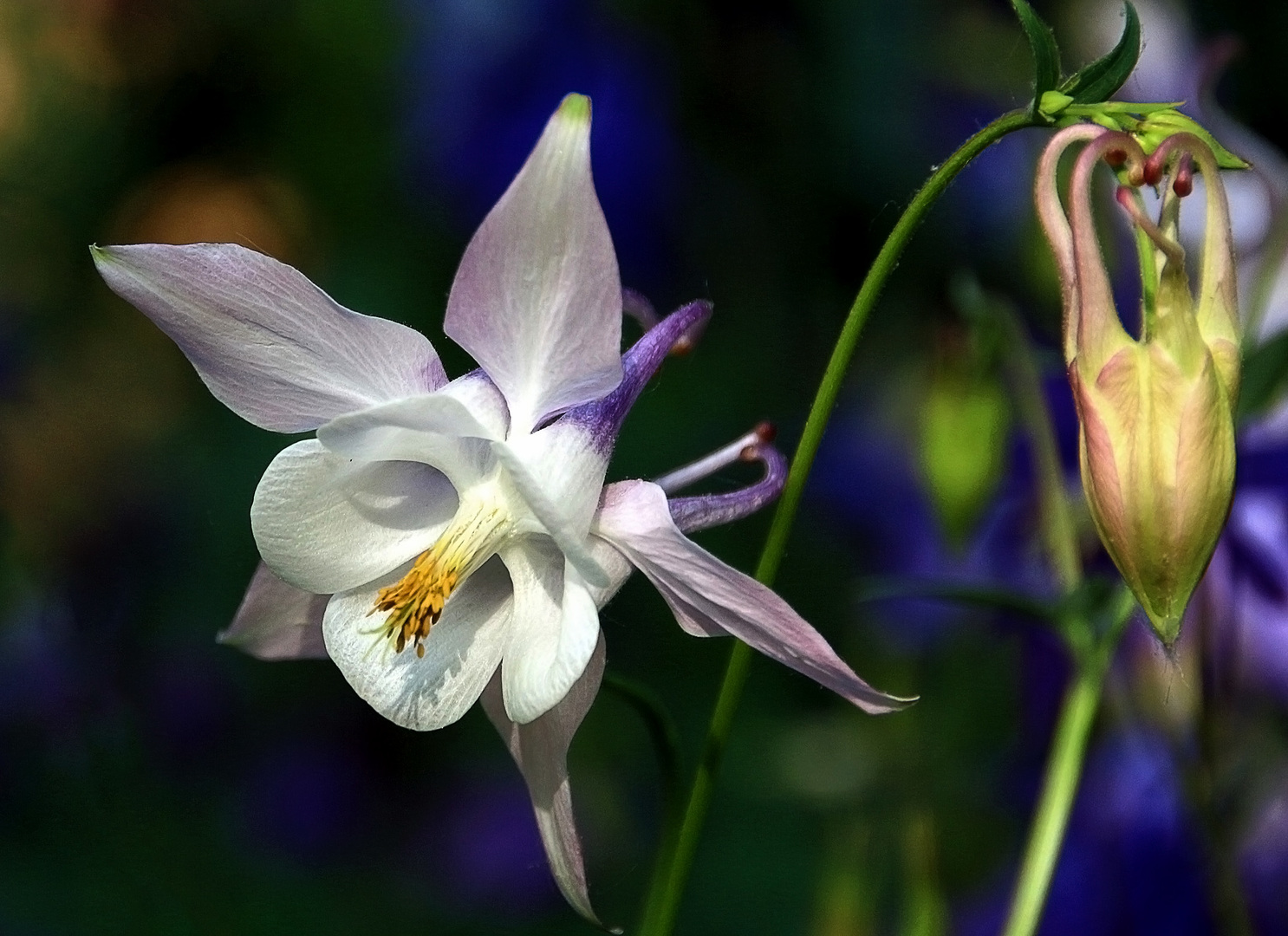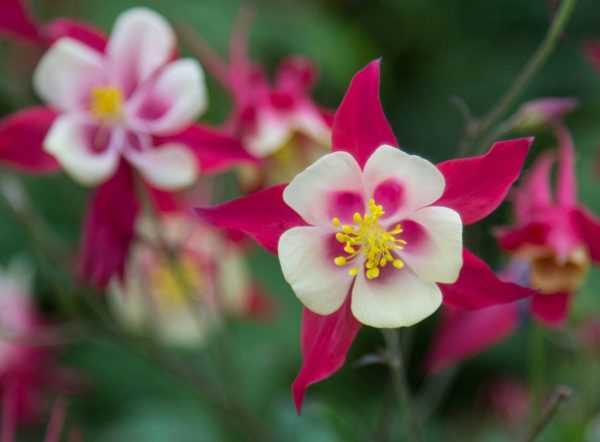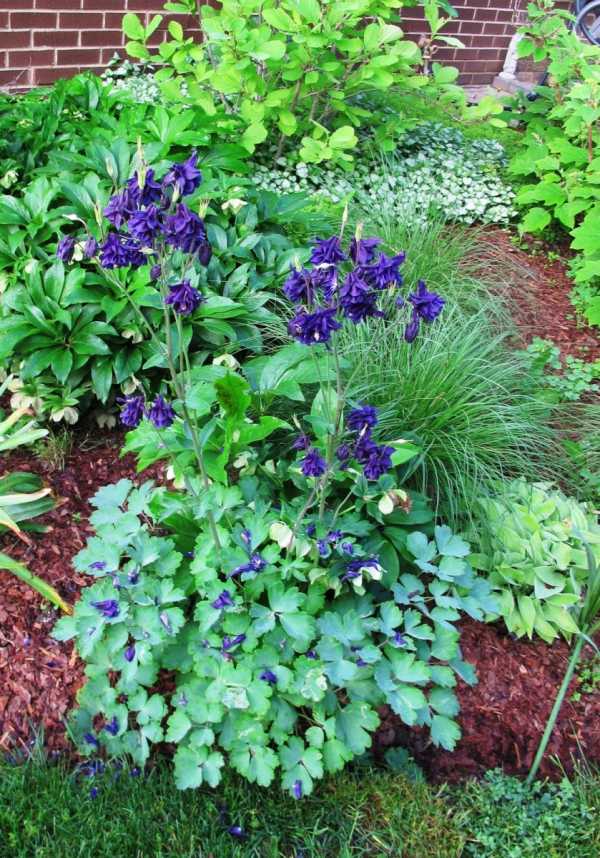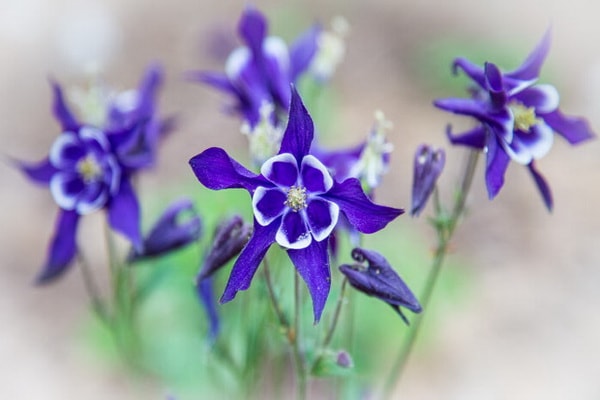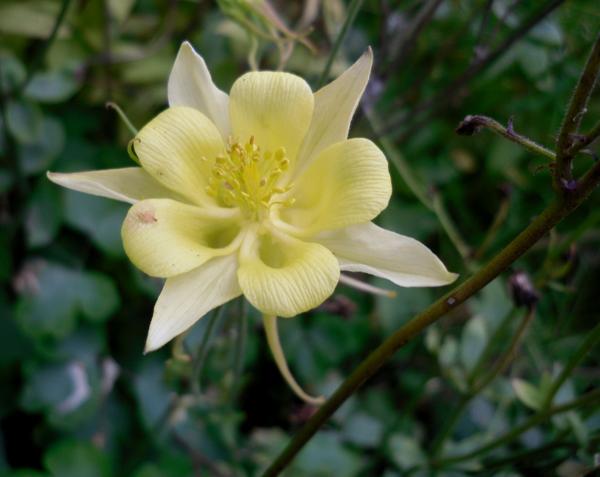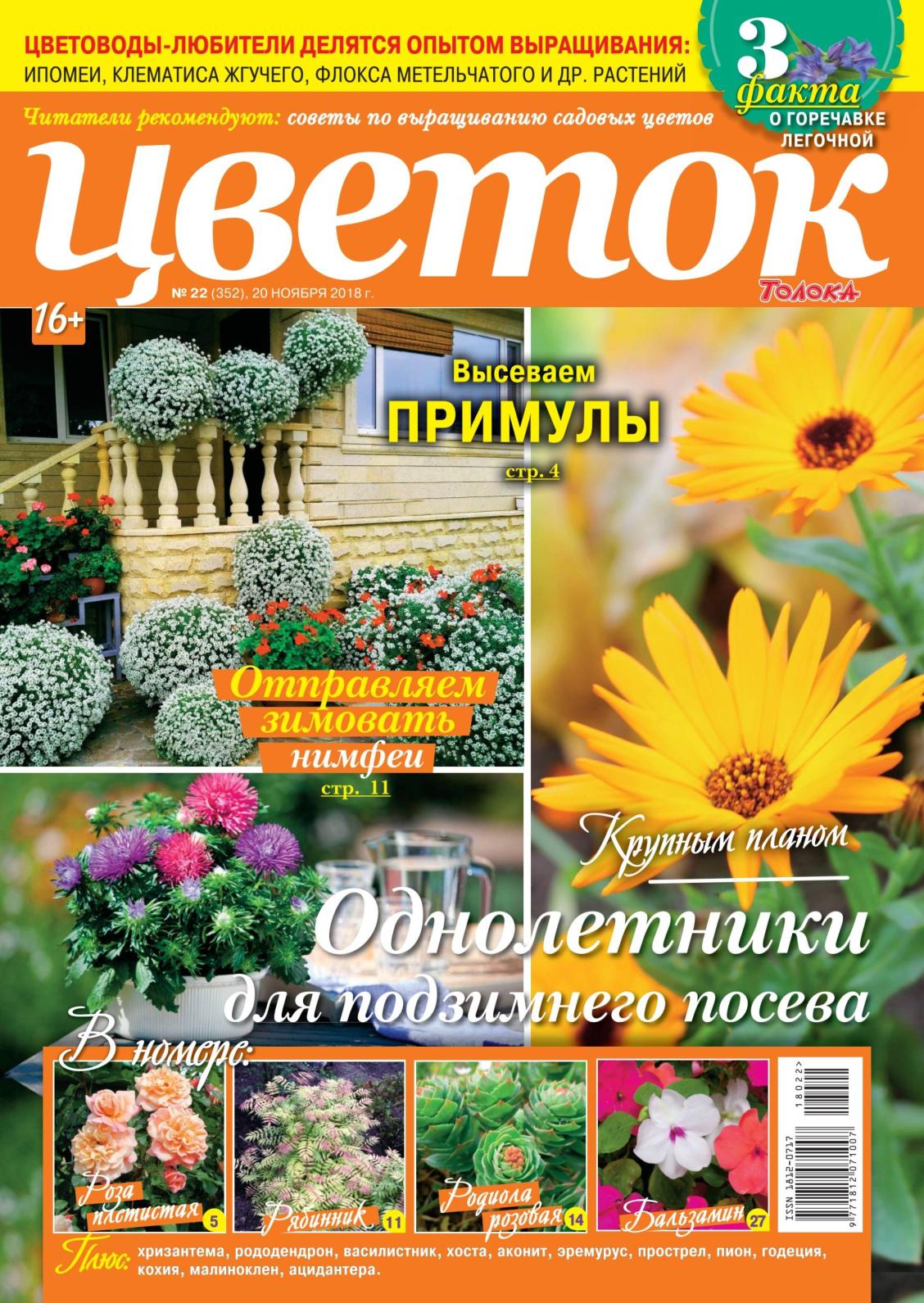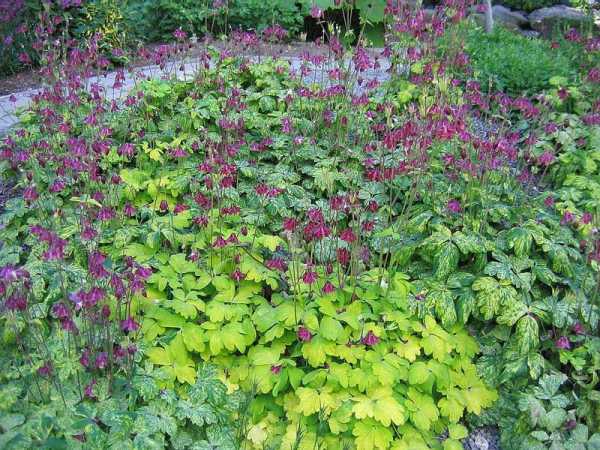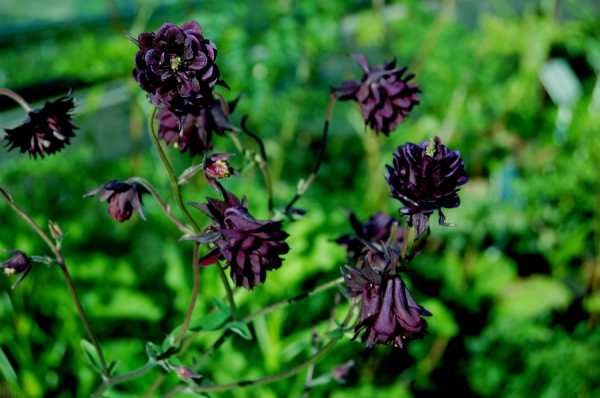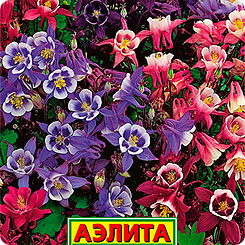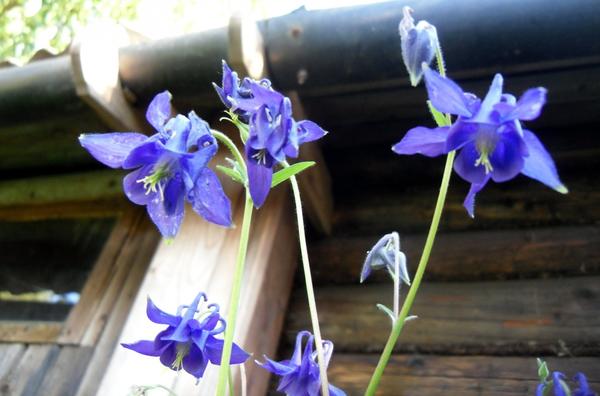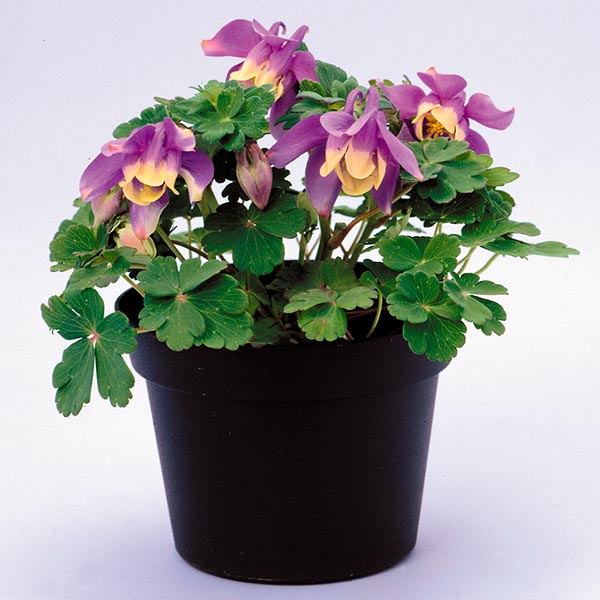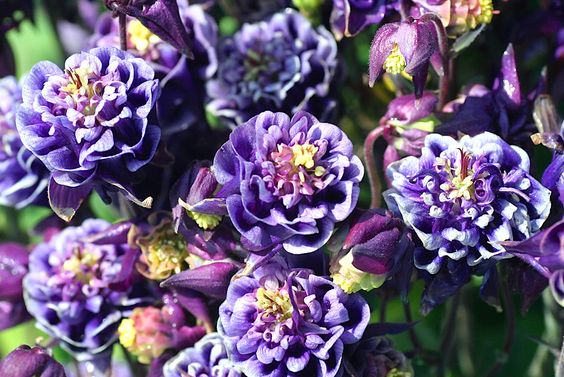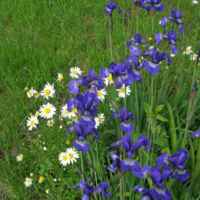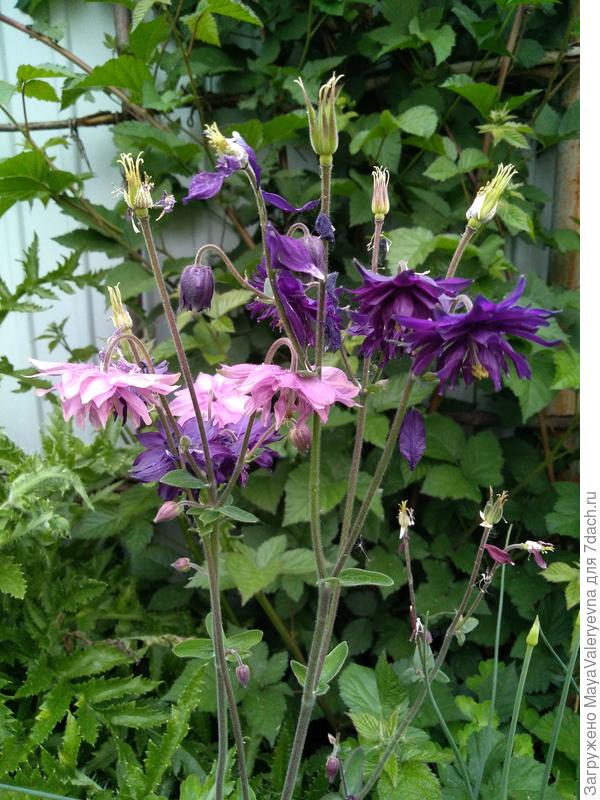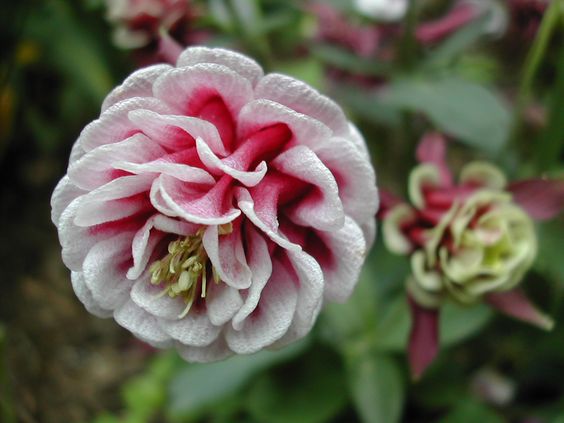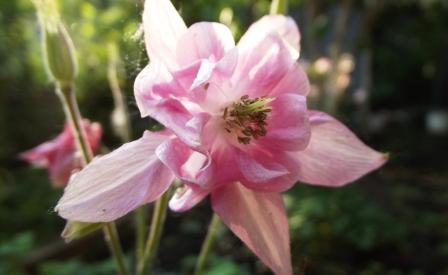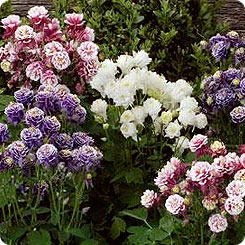Growing aquilegia
For the successful cultivation of this plant, good soil is not too important, since it is unpretentious to the quality of the soil, but at the same time it prefers loose soils with moderate moisture. When planting flowers, it is recommended to add humus or compost to the soil, and choose areas protected from direct sunlight. It should be noted that aquilegia can "live" in the sun, but the flowers will be smaller and faded.
Growing aquilegia
Reproduction from seeds
There are several ways this plant can be propagated, but it grows best from seeds. They must be collected immediately after small green pods appear on the shoots, otherwise they will crumble into the ground, and empty "boxes" will remain on the bushes. Dry seeds indoors at room temperature in a suitable container
We must not forget that when working with them, you must be very careful and keep them out of the reach of children, as they are very poisonous.
Seed collection
It is better to sow aquilegia immediately after collecting the seeds, and after the first shoots appear, transplant them to a permanent place. Seeds are planted to a depth of about half a centimeter in autumn or spring, protected with foil (autumn seedlings grow much faster). After the first shoots appear, the film should be removed and young plants watered every three to four days.
Stratification and seeding
If sowing can only be carried out in the spring, seeds should be stored at a low temperature - ideally in the refrigerator, mixed with a little soil. In March, they are taken out, washed well, and frozen to improve germination - for this, the seeds are preliminarily placed in a damp cloth or wet sand and kept at a temperature of 0-5 ° C. After that, they are sown in boxes with a moistened and compacted mixture of sand (best of all river), leaf earth and humus, taken in equal parts. The seeds are lightly sprinkled with a thin (about 3 mm) layer of soil using a fine sieve, after which the containers are tightly covered. They should be kept in a place protected from sunlight (the optimum temperature is 16-18 ° C), moistening the top layer as necessary. This is best done with a spray bottle, as aquilegia seeds are very sensitive to excess moisture and can easily die.
After the appearance of 2-3 leaves (usually this happens after a month), they must be immediately planted in separate containers, and in May-early June - planted in an open place in the most gentle way for the roots at a distance of at least 20 cm from each other. This is a very crucial moment, since it is during transplantation that most young plants die. After planting, the seedlings should be thinned regularly. Flowers usually appear in the second year after planting shoots in a permanent place.
Tender aquilegia seedlings
Reproduction by dividing the bush and cuttings
Aquilegia has a powerful root system, but at the same time it does not tolerate transplantation well enough, so reproduction by vegetative methods is not an easy task. The structure of the root does not allow digging up the plant so as not to damage it at all, it is simply impossible, and it subsequently takes a long and hard time to take root. It is for this reason that such breeding methods are used only when it is necessary to preserve a particular variety.
Cutting and dividing
To divide the bush, plants are taken at least 3 years old, carefully dug out, and most of the leaves are cut off (this should be done in spring or summer, before autumn).The root should be rinsed well with water and cut lengthwise so that several buds and small roots remain in the segments. Sprinkle the slices with charcoal and plant them in loose soil. For propagation by cuttings, young shoots are broken off from their mothers in the spring and sand or loose soil is planted in a greenhouse (you can in an open place, covering each shoot with a plastic bottle) after pretreatment with special rooting agents.
Aquilegia care
How to care for aquilegia
As usual, the main care of aquilegia is watering, feeding, loosening and weeding the soil around the plant during the period of active growth. Aquilegia loves to drink, but since its root system goes deep into the ground, it rarely suffers from a lack of moisture, except in severe drought. Remove weeds in time, especially when the seedlings are young and short; loosen the soil after watering or rain so that moisture does not evaporate from the surface layer of the soil quickly and feed the aquilegia so that it finds its best shape. Plots with aquilegia are fertilized twice a summer: mineral fertilizers at the beginning of active growth - 50 g of superphosphate, 15 g of potassium salt and 25 g of nitrate per 1 m² and a non-concentrated solution of mullein at the rate of 1 bucket per 1 m². Two dressings in the summer are quite enough.
In the photo: Cultivation of the catchment
Reproduction of aquilegia
In addition to the seed method, for the propagation of aquilegia in floriculture, vegetative ones are also used - by dividing the bush and by cuttings.
The division of the bush is used only in extreme cases, when it is necessary to preserve some particularly valuable form or variety. The fact is that the aquilegia root system lies very deeply, and fragile roots do not tolerate the transplantation and division procedure well.
If you still had to resort to this method, select a 3-5 year old bush in early spring or early autumn, dig it out, very carefully so as not to damage small roots, wash them off the ground, cut off all shoots at a height of 5-7 cm and all leaves except two or three youngest ones, then cut the taproot in half so that each half has two or three renewal buds and several small roots, sprinkle the cut with crushed coal and plant the cuttings in boxes with a light but nutritious soil mixture ... Most likely, they will be sick for a long time.
How to grow a delphinium - practical advice
Reproduction of aquilegia by cuttings is much easier to carry out. In the spring, while the leaves have not yet blossomed, a young shoot of aquilegia is cut out "with a heel", the lower end is treated with Kornevin and planted in a greenhouse or in the ground, but under a plastic bottle in loose soil, or better in river sand somewhere in a place shaded from the sun ... You will have to water the cutting without removing the shelter, which can be removed for ventilation only after ten days. It takes about 3-4 weeks for rooting, after which the cutting is dug up and transplanted to a permanent place.
Pests and diseases of aquilegia
Of the diseases affecting aquilegia, powdery mildew, gray rot and rust should be called. Parts of the plant affected by gray rot must be removed and burned, as well as leaves covered with rust spots. But if gray rot cannot be cured with any drugs, then rust can be fought by spraying with sulfur-containing drugs or a soap solution with copper sulfate.
But most often, aquilegia is sick with powdery mildew - a white fungal bloom appears on the leaves and stems, under which the leaves curl, turn brown and die. To get rid of the fungus, it is necessary to spray the plants with a solution of colloidal sulfur and green soap.
Among insects, the enemies of aquilegia are aphids, spider mites, scoops and nematodes. Against aphids and spider mites, Actellik, yarrow paste and Karbofos have proven themselves well.
But it is very difficult to fight nematodes and often in the end you just have to change the site, and plant those plants that are not afraid of nematodes on the affected flower bed - onions, cereals, garlic. Diseased plants are burned.
Aquilegia: planting and care in the open field
It must be borne in mind that ordinary aquilegia blooms for 2 years. Flowers are thrown intensively between early June and early August.
Aquilegia has become quite often used when decorating flower beds and lawns. If you choose the right height of the plant, you can decorate it with landscape alpine slides. It is most suitable for mixing with other plants. After all, its natural distribution area is mountainous regions.
Therefore, you just need to pay attention to the companion plants - and the result can surprise and delight even the most demanding aesthetes.
Tall plants tend to look best when planted in a heap in one place. You should not plant aquilegia in a row, since tall representatives of this genus can simply fill up flower stalks from strong winds or heavy rainfall.

Tall aquilegia combined with other flowers
The main thing is to choose the right variety and then flowers of a certain color, shape and size will be able to decorate any flower bed.
Including you need to pay attention to the height of the peduncle, so that it does not drown out its neighbors and does not get lost among them
Growing aquilegia from seeds
How to grow aquilegia from seeds? It is best to sow aquilegia in the ground immediately after collecting the seeds, and in the spring, when shoots appear, transplant them to a permanent place. But if you have to postpone sowing until spring, then store the seed at a low temperature.
So that during the winter the seeds of aquilegia do not lose their germination, they are mixed with earth and placed in the refrigerator.
In the spring, in March, the seeds are washed from the ground, sown in boxes with a well-compacted and watered light substrate of humus, sand and leafy earth in equal proportions. A 3 mm layer of soil is poured on top of the spread seeds through a fine sieve and the box is covered with newspaper or burlap. Keep containers with crops in a shaded room at a temperature of 16-18 ºC, moistening the topsoil as needed from a spray bottle. Sprouts usually appear within a week or two from the day of sowing. When the first pair of true leaves appears - usually in late April or early May - the seedlings are transplanted into more nutritious loamy soil.
Types and varieties of aquilegia
Despite the fact that there are about 120 species of aquilegia in nature, not so many of them have been introduced into the culture. The following species are most commonly cultivated.
Alpine aquilegia (Aquilegia alpina)
A low (up to 30 cm) plant that can grow up to 80 cm in height on rich soils. Alpine aquilegia has large flowers - up to 8 cm in diameter, of different shades of blue, spurs are short and curved. This species blooms in late June and early July;
In the photo: Alpine Aquilegia (Aquilegia alpina)
Fan-shaped aquilegia (Aquilegia flabellata)
Or aquilegia Akita, a plant up to 60 cm high with trifoliate long-petiolized leaves of a basal rosette, with flowers 5-6 cm in diameter with long, strongly curved spurs. Flowers on a peduncle from one to five, they are blue-purple in color with a white fuzzy border along the edge. This type of aquilegia is winter-hardy, grows well, since it gives self-seeding;
In the photo: Aquilegia fan-shaped, Akita (Aquilegia flabellata)
Aquilegia vulgaris (Aquilegia vulgaris)
European species 40-80 cm in height with flowers 5 cm in diameter in different shades of blue and purple, but the culture usually grows numerous varieties of this type of aquilegia with flowers of various colors, simple, double, with spur or spurless. This is the most frost-resistant type of aquilegia - it can withstand up to -35 ºC;
In the photo: Aquilegia vulgaris (Aquilegia vulgaris)
Aquilegia hybrid (Aquilegia hybrida)
Which combines various forms, most often obtained from the crossing of American species with ordinary aquilegia. In height, depending on the variety, it grows from 50 cm to 1 m. Spurs in hybrids of different lengths, there are also non-spur varieties, flowers are large, up to 9 cm in diameter, both simple and double;
Photo: Aquilegia hybrid (Aquilegia hybrida)
Aquilegia chrysantha
A species from North America characterized by large, non-drooping golden flowers with long spurs. Surprisingly winter-hardy, drought-resistant. In our latitudes, it is not yet a frequent visitor, but the interest in it among flower growers has greatly increased recently;
In the photo: Aquilegia chrysantha
Aquilegia canadensis (Aquilegia canadensis)
Also a North American species with straight spurs and red-yellow flowers. Dislikes dry places, but grows well in the shade. It is also not often found in our gardens yet;
In the photo: Canadian Aquilegia (Aquilegia canadensis)
Dark aquilegia (Aquilegia atrata)
European species 30-80 cm high with bluish leaves and dark purple drooping flowers 3-4 cm in diameter, short curved spurs and protruding stamens. It blooms in late May and early June. Loves partial shade. It is the basic species for breeding varieties with dark flowers. Looks good in flower arrangements and cut;
In the photo: Aquilegia dark (Aquilegia atrata)
Olympic Aquilegia (Aquilegia olympica)
Originally from the Caucasus, Iran and Asia Minor, 30-60 cm in height, densely pubescent stem, large, up to 10 cm in diameter, light blue flowers with long spurs. Blooms from mid-May to mid-June;
In the photo: Olympic Aquilegia (Aquilegia olympica)
Aquilegia skinneri
Native to North America, hardy (up to -12 ºC). The flowers are drooping, red-yellow, spurs are straight.
In the photo: Aquilegia skinneri
In addition to the listed types of aquilegia, which are of interest among flower growers, such species as aquilegia are cultivated in culture, such as aquilegia small-flowered, aquilegia blue, aquilegia bicolor, aquilegia Bertoloni, aquilegia ferruginous, aquilegia green-flowered, aquilegia and some others.
Japanese quince: planting and care, description of varieties
After this article, they usually read
Add a comment
Vegetative propagation and transplantation
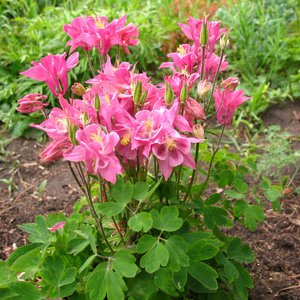 To get more representatives of a particular variety, you can use propagation methods such as dividing a bush or cuttings with root shoots. However, difficulties arise here: the transplant greatly injures the plants, which is due to the specifics of the structure of the conductive tissues.
To get more representatives of a particular variety, you can use propagation methods such as dividing a bush or cuttings with root shoots. However, difficulties arise here: the transplant greatly injures the plants, which is due to the specifics of the structure of the conductive tissues.
Therefore, it is not recommended to buy adult or old aquilegia bushes for planting. Otherwise, you will have to wait a long time until they can start growing in a new place. Indeed, during digging, the main root is seriously injured, which subsequently leads to the wilting of the plant. Therefore, when the bush is planted in a new place, it will take a long time for the aquilegia to recover.
Dividing the bush
For this breeding method, specimens from 3 years old and older are used. You need to be especially careful during digging, trying to penetrate the soil as deeply as possible.
- most of the leaves that are on the plant must be removed;
- then you need to clear the root from the ground, and divide the main root lengthwise, as a result, at least two buds and roots should be present on one segment;
- the place of the cut must be treated with charcoal, after which the "delenok" is planted in loose soil.
You can propagate aquilegia in this way in the spring or before the beginning of autumn. Then they will have enough time for rooting so that they can get through the winter well.
Cuttings
This breeding method involves harvesting young shoots in the spring, which are placed in loose soil or ordinary sand in a greenhouse. However, in the latter case, you will first have to process the planting material with a rooting agent.For early rooting, cuttings need to create light shading, caring for them will be reduced to spraying.
Aquilegia Hybrid
The name itself indicates that breeders have worked hard to improve both the shape and size of the flower, and the versatility of its color. Breeders managed to achieve such results by crossing the catchment area of the Alpine and American varieties of the plant.
Aquilegia hybrid is tall - shoots can reach 1 m in height. And the flowers themselves are quite large - up to 10 cm in diameter. If we talk about the number of flower petals of this variety, then they can be standard - 5 main and 5 spurs. In other variations of the variety, the number of petals can be much larger and form a double or fan-shaped flower.
The most common color options are a combination of white with blue or red. Monochromatic coloration of the peduncle is also common.
Important! If you want to get an abundant flowering cap on your flower bed or lawn, then you should choose hybrid aquilegia, since they are distinguished by abundant simultaneous flowering, which lasts a long time. Also, this variety is suitable for growing in more northern regions than it usually grows - it is quite frost-hardy and unpretentious in care.
Also, this variety is suitable for growing in more northern regions than it usually grows - it is quite frost-hardy and unpretentious to care for.
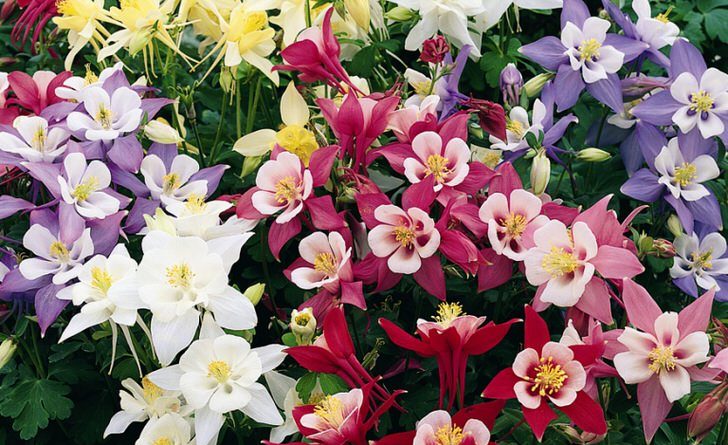
Aquilegia Hybrid

